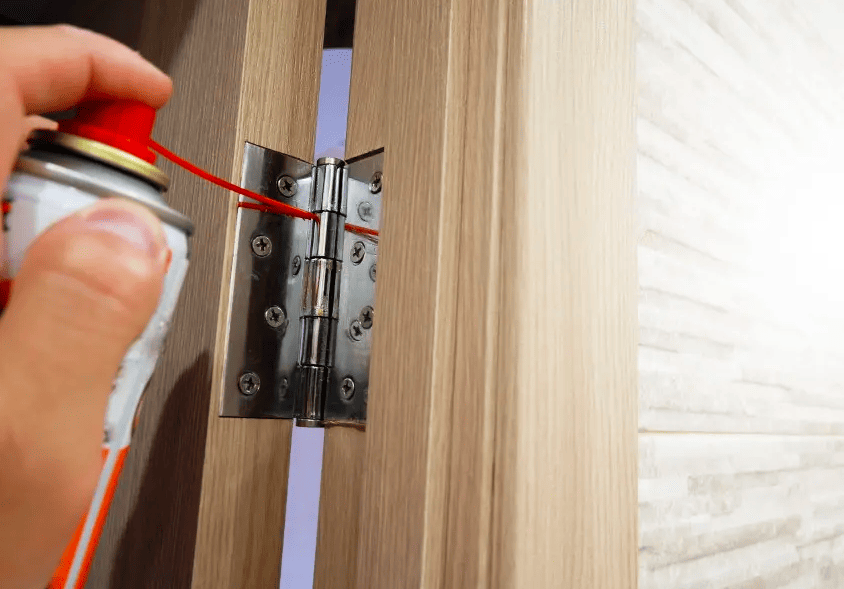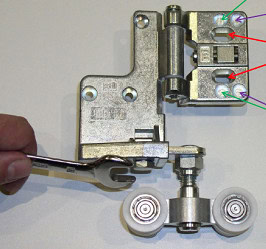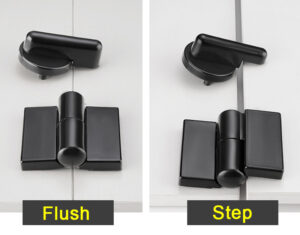Hinges play a crucial role in the industrial sector, providing smooth and reliable rotation for doors, gates, and various other applications. However, rattling in hinges can cause operational issues, noise disturbances, and even premature wear. This article explores the importance of achieving smooth hinge rotation in the industrial sector and identifies common causes of hinge rattling. By following the guidelines presented here, businesses can ensure optimal hinge performance and minimize potential disruptions.

Understanding the Basics of Hinge Design
- Different Types of Hinges Used in Industrial Applications
In industrial settings, a variety of hinges are employed to meet specific requirements. These include butt hinges, continuous hinges, pivot hinges, and concealed hinges. Each type offers distinct advantages based on factors such as load capacity, door weight, and space limitations. Understanding the different hinge options available allows businesses to choose the most suitable hinge type for their specific application. - Factors to Consider When Selecting Hinges for Smooth Rotation
To achieve smooth hinge rotation, several factors must be considered during the selection process. Load capacity and weight distribution are critical aspects that determine the hinge’s ability to support the weight of the door or gate. Environmental conditions and corrosion resistance are also crucial considerations, as hinges exposed to harsh elements can deteriorate over time. Additionally, misalignment compensation and self-lubrication features can contribute to smoother and more reliable hinge operation.
Proper Installation Techniques
- Preparing the Hinge Mounting Surfaces
Proper preparation of hinge mounting surfaces is essential for avoiding rattling. This involves ensuring that the surfaces are clean, free from debris, and perfectly flat. Any irregularities or misalignment issues should be addressed before installing the hinges to prevent future problems. - Correct Alignment and Positioning of Hinges
Achieving correct alignment and positioning of hinges is vital for optimal functionality. Measuring tools and templates can be utilized to accurately position the hinges and ensure they are aligned with the door or gate. Proper adjustment of the hinge position eliminates unnecessary stress and reduces the likelihood of rattling during rotation.
Lubrication and Maintenance
- Importance of Regular Lubrication for Smooth Hinge Rotation
Regular lubrication is paramount for ensuring smooth hinge rotation. Lubricants not only reduce friction and wear but also minimize noise and vibration during operation. By applying lubrication at appropriate intervals, businesses can extend the lifespan of their hinges and maintain consistent performance. - Recommended Lubricants for Different Hinge Types
Different hinge types may require specific lubricants for optimal performance. Choosing between grease and oil depends on factors such as load capacity, speed, and environmental conditions. Grease offers better adhesion and longevity, while oil provides smoother operation in high-speed applications. Applying the lubricants correctly and avoiding excessive amounts is crucial to prevent buildup and maintain the desired level of hinge performance. - Establishing a Maintenance Schedule for Hinge Inspection and Lubrication
To prevent hinge rattling and ensure long-lasting functionality, businesses should establish a maintenance schedule for regular inspection and lubrication. The frequency of inspections and lubrication depends on the hinge’s usage and operating conditions. It is also essential to be aware of signs of wear or damage, such as increased resistance during rotation or visible deterioration, which should be addressed promptly to avoid further issues.
Enhancing Hinge Stability and Performance
- Reinforcing Hinge Mounting Points
To enhance hinge stability, reinforcing the mounting points is crucial. This can be achieved by using additional screws or fasteners to secure the hinges firmly to the mounting surface. Reinforcing weak or worn-out mounting areas helps distribute the load evenly, reducing the chances of hinge rattling caused by loose or compromised attachments. - Implementing Shock Absorption Mechanisms
In applications where shocks or vibrations are common, implementing shock absorption mechanisms can effectively minimize hinge rattling. Rubber or polyurethane bushings placed between the hinge components act as dampeners, absorbing shocks and reducing unwanted noise and vibrations. Spring-loaded hinges or dampers can also be utilized to enhance hinge stability and minimize rattling in situations where external forces or sudden impacts are expected. - Upgrading to High-Quality and Precision Hinges
Upgrading to high-quality and precision hinges can significantly improve hinge stability and performance. Premium hinges are manufactured with greater attention to detail, ensuring tight tolerances and better alignment. Investing in such hinges can provide benefits such as enhanced durability, smoother operation, and reduced chances of rattling. Consulting with hinge manufacturers for custom solutions tailored to specific industrial applications is also recommended.
Troubleshooting Common Hinge Rattling Issues
- Identifying Loose or Worn-out Components
Loose screws or bolts are common culprits of hinge rattling. Regular inspection helps identify and tighten any loose components to restore optimal functionality. Worn-out pivot points or bushings can also contribute to rattling, requiring replacement to eliminate the issue. - Addressing Misalignment and Bent Hinge Issues
Misalignment and bent hinges can result in undesirable rattling during rotation. Straightening bent hinges using appropriate tools and techniques restores their proper shape while realigning misaligned hinge components ensures smooth operation. Proper troubleshooting and corrective actions are essential for resolving hinge rattling issues effectively.
Conclusion
In the industrial sector, achieving smooth hinge rotation is vital for efficient operation and durability. This article has emphasized the importance of addressing hinge rattling and provided valuable insights into various aspects of hinge optimization. By understanding hinge design principles, following proper installation techniques, implementing regular lubrication and maintenance practices, enhancing hinge stability, and troubleshooting common issues, businesses can minimize rattling, improve hinge performance, and ensure seamless operations in their industrial applications. By prioritizing hinge maintenance and optimization, businesses can maximize the longevity and reliability of their hinge systems, leading to enhanced productivity and reduced downtime.







